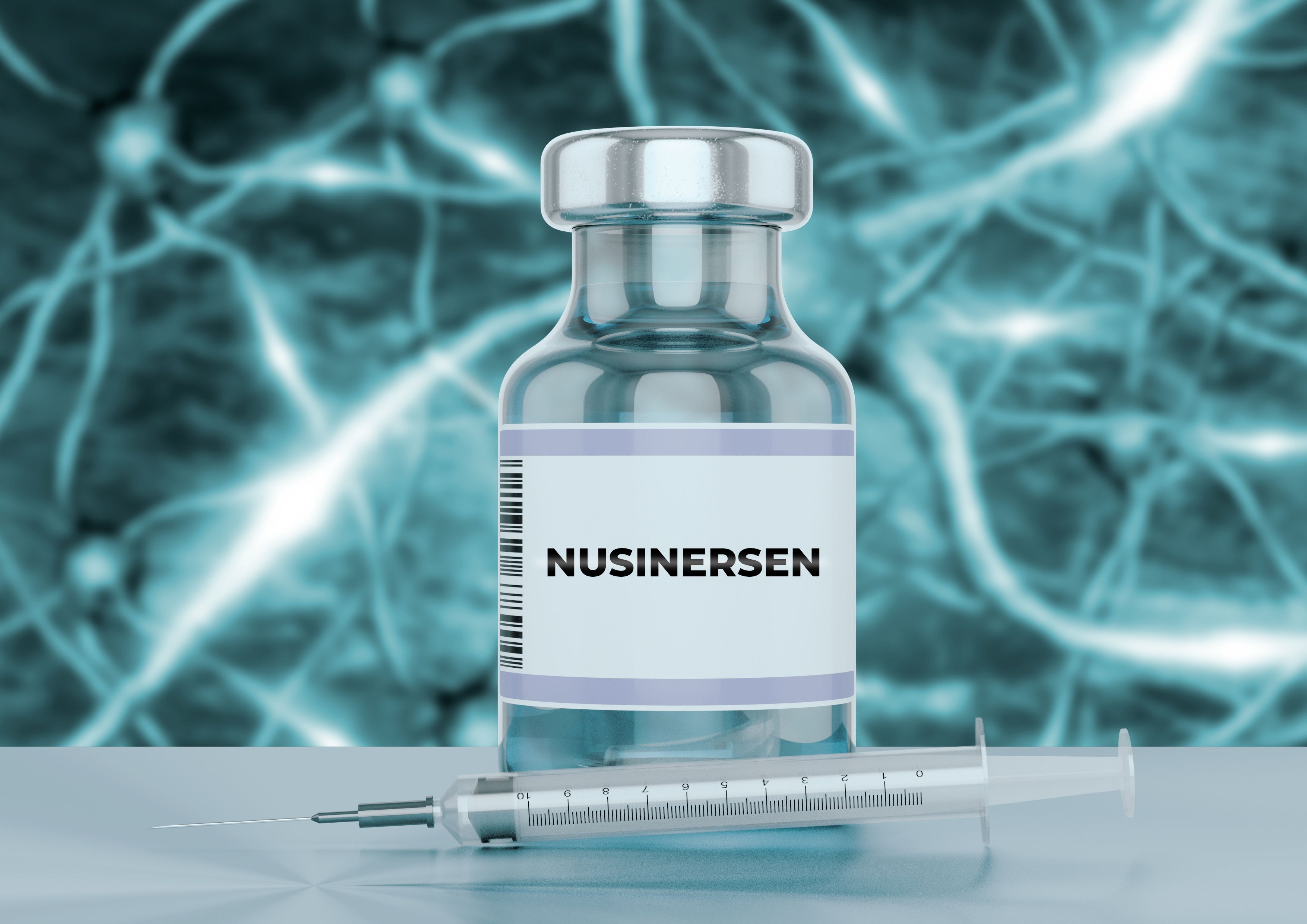News
Article
Higher-Dose Nusinersen Meets Primary End Point in Phase 2/3 DEVOTE Study for Spinal Muscular Atrophy
Based on the positive topline data, the company plans to submit for regulatory approval for a higher dose of nusinersen for spinal muscular atrophy (SMA) treatment.
This article was originally published in NuerologyLive® and has been lightly edited.
New topline data from the pivotal Part B cohort of the phase 2/3 DEVOTE study (NCT04089566) showed that treatment with a higher dose of nusinersen (Spinraza; Biogen) met its primary end point at 6 months, achieving a statistically significant improvement in motor function among treatment-naïve symptomatic infants with spinal muscular atrophy (SMA) relative to a prespecified matched sham control group from the phase 3 ENDEAR study (NCT02193074).1
Nusinersen was the first FDA-approved drug for the treatment of SMA in pediatric and adult patients in December 2016 | image credit: AGPhotography - stock.adobe.come

The higher dose of nusinersen being investigated is comprised of 2 separate 50-mg doses at 14 days apart, and a higher maintenance regimen of 28-mg every 4 months, compared with the approved nusinersen regimen of 12-mg. In the trial, the higher dose cohort (n = 75) revealed significant improvement statistically over the matched sham comparator on the primary end point of change in Children's Hospital of Philadelphia-Infant Test of Neuromuscular Disorders (CHOP-INTEND) from baseline to 6 months (P < .0001).
“While there has been remarkable progress in the treatment of SMA, there remains significant unmet need. Building on the well-characterized profile of Spinraza established over the past 10 years, we continue to explore the potential for maximizing efficacy outcomes while maintaining our commitment to safety,” Stephanie Fradette, PharmD, the head of the neuromuscular development unit at Biogen, said in a statement.1
For the 3-part study of DEVOTE, investigators enrolled 145 participants across varying ages and SMA types. In the pivotal Part B cohort, researchers randomized treatment-naïve children with infantile-onset SMA 2:1 to be given the higher dose of nusinersen or the approved 12-mg regime, which comprised of 4 loading doses and maintenance doses every 4 months. The primary end point of Part B was the change from baseline on the CHOP-INTEND at 6 months with the higher dose regimen of nusinersen in comparison with a matched, untreated sham control group from the phase 3 ENDEAR study. For context, ENDEAR was 1 of the 2 pivotal studies that formed the basis of regulatory approval for nusinersen 12-mg.
Additional findings favored the higher dose regimen compared with the sham across secondary end points and showed in favor of it over the currently approved 12-mg regimen on key biomarker and efficacy measures. Overall, the higher dose regimen was reported as generally well tolerated among the participants, with adverse events (AEs) experienced by patients generally consistent with SMA as well as the known safety profile of nusinersen. Moreover, safety findings showed that the percentage of serious AEs was lower in the higher dose regimen group (n = 30; 60%) as compared with the 12 mg group (n = 18; 72%). According to the recent news release on the topline data, further details on results from DEVOTE will be presented at upcoming medical conferences.
“The encouraging topline results from DEVOTE show that the higher dose regimen can slow neurodegeneration faster, as shown by greater reductions in neurofilament at day 64 relative to the approved dose. Over time, the higher dose regimen led to meaningful clinical benefit in infants with symptomatic SMA. We look forward to sharing the detailed results with the SMA community and health authorities,” Fradette said in a statement.
An interim analysis from Part A of the ongoing phase 2/3 DEVOTE study presented at the 2021 Muscular Dystrophy Association (MDA) Clinical and Scientific Conference, March 15-18, showed that treatment with high-dose nusinersen was safe, with no treatment-related AEs observed in patients with SMA.2 As of December 7, 2020, 6 participants had been included in the study and received 28-mg nusinersen for 161-257 days. At follow-up, AEs were observed in 4 participants, none of which were related to the study drug, and none of which were considered severe or serious.
In Part A’s safety findings presented at MDA 2021, lumbar puncture was associated with AEs in 4 participants. The documented AEs related to lumbar puncture were headache, vomiting, procedural headache, procedural pain, chills, decreased appetite, and paresthesia. Of 21 total lumbar puncture procedures, 11 (52%) were associated with greater than 1 AE considered related to lumbar puncture.
Nusinersen was the first FDA-approved drug for the treatment of SMA in pediatric and adult patients in December 2016. The drug is an antisense oligonucleotide that targets the root cause of SMA by continuously increasing the amount of full-length SMN protein produced in the body. It is administered directly into the central nervous system, where motor neurons reside, to deliver treatment where the disease starts.3
References
1. Biogen Announces Positive Topline Results from Study of Higher Dose Regimen of Nusinersen, Showing Significant Benefit in Treatment of SMA. News Release. Biogen. Published September 4, 2024. Accessed September 4, 2024. https://investors.biogen.com/news-releases/news-release-details/biogen-announces-positive-topline-results-study-higher-dose
2. Pascual SI, Day JW, Finkel RS, et al. Ongoing phase 2/3 DEVOTE (232SM203) randomized, controlled study to explore high-dose nusinersen in SMA: Part A interim results and Part B enrollment update. Presented at MDA Clinical and Scientific Conference 2021; March 15–18.
3. FDA approves spinraza (nusinersen) for the treatment of spinal muscular atrophy in pediatric and adult patients. News release. FDA. December 23, 2016. Accessed September 4, 2024. accp1.org/accp1/5publications_and_news/fda_approves_spinraza.aspx




